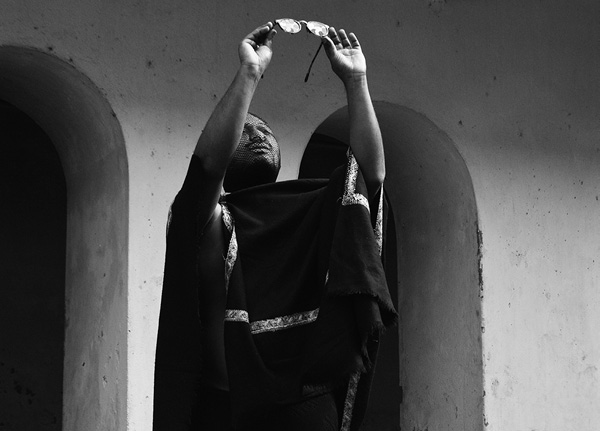
SHAMELESS
first performed on January 28, 2016
An abandoned old building, Kolkata, India
performed once in 2016
ALI ASGAR
Maine / Dhaka, Bangladesh
962212033a962212033l962212033i9622120331962212033996221203389622120337962212033.962212033a962212033a96221203359622120337962212033@962212033g962212033m962212033a962212033i962212033l962212033.962212033c962212033o962212033m
aliasgarart.com
SHAMELESS
ALI ASGAR
In 2016 I started my performance art project “Shameless,” which is about shame, gender, and sexuality. The project consisted of a series of performances in different venues in Bangladesh and India. This project is an effort to identify why and how our bodies are portrayed in a way which, if not fitting with social norms, is a matter to be ridiculed. The way one prefers to flaunt his physical beauty is a matter of one’s own choice. The moment he or she starts to represent their physicality in a socially accepted way, individuality starts to wane and uniqueness becomes diluted. Ironically, we live under the reign of mediocrity, a society gradually proving itself to be anti-intellectual, where shaming comes in various forms—leaving almost no breathing space for a person’s own sense of free-spirited nature.
“Shameless” stamps down on that mediocrity; it is a protest that brings forth the issue of freedom of expression into a new light, from the perspective of gender and sexual orientation awareness. The first performance of this project was about shame and erotica, in which I stayed on top of a 4-foot by 6-foot mirror, inside a gallery, for six hours. I kissed the mirror, and during parts of the performance, my audience also kissed me. The second performance was about shame and gender, and involved pushing bananas into my anus, ending with me appearing nude. The third part was about shame and beauty; a collaborative performance that lasted eighteen hours. I marked a space in a gallery, claiming it as a Gender-Free Zone. There was a collection of objects and props which the audience were invited to use on my body as they entered the zone. The performance also connected me with the audience using Facebook, text messages, and phone calls. The fourth, and last, performance was about shame and sin. I was hidden inside a black cloth, remaining like this inside the gallery for twelve hours. During this time I broke a big mirror and mimicked the Muslim prayer “Namaj” repeatedly.
As a performance artist, I believe that the body is the main protagonist of my performance pieces. I want to give my viewers an intimate experience through sound, light, and transformation of space, where they will experience a body as a live object. My body and my identity is something that I have talked about shamelessly for the last few years with my family, my friends, and with people I am surrounded by in Dhaka. Being an open person about my sexual orientation wasn’t an easy thing for me. I went through a tunnel of depression and suppression—a journey of self-questioning about my identity. Is this identity something to be ashamed of, or am I shameless to talk about it so publicly? This inquiry took me to further realms of questioning, where I continue to explore the meaning of masculinity, identity, and shame through interrogation of my surrounding environment. I still don’t have the answer. As a performance artist I am not looking for something beyond my life. I am trying to present this work series in front of a large audience to make them think about my very personal issue, and through this provoke them to question their experience of shame, sin, masculinity, and identity.